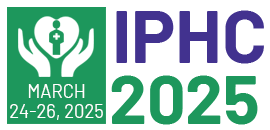Title : The effect of basic life support training on willingness in performing bystander hands-only cardiopulmonary resuscitation among high school students in Patna, Bihar
Abstract:
Out-of-hospital cardiac arrest (OHCA) poses a significant global health challenge, especially in India with dismal bystander CPR rates (1.3%). We investigated the impact of basic life support (BLS) training on high school students' willingness to perform hands-only CPR in Patna, Bihar, aiming to highlight students’ potential as vital responders and advocate for integrating CPR training into school curriculums, potentially mitigating OHCA mortality rates in India. This quasi-experimental study assessed the impact of BLS training on high school students' willingness to perform bystander hands-only CPR in Patna, Bihar. Using convenience sampling, 592 students from two schools participated, with a pre-post intervention design. A structured questionnaire measured changes in knowledge, confidence, and willingness to perform CPR before and after training, revealing insights into the effectiveness of BLS education among adolescents. Of the 592 participants, 73.3% were aged 14 to 16 years, with a nearly balanced gender distribution. A significant majority (86.2%) lacked prior BLS training, highlighting the necessity for educational interventions. While general awareness of BLS was high (71.5%), detailed knowledge remained low (13.2%), indicating a gap between awareness and actionable knowledge. Post-training, willingness to perform CPR increased significantly to 97.8%, emphasizing the effectiveness of BLS training in enhancing confidence and intent. The predominant reason for hesitation among 205 children regarding CPR was fear of incomplete or poor performance, cited by 34.0% of respondents. Overall, structured training significantly improved both knowledge and confidence for effective emergency response among high school students, with over 97% achieving satisfactory knowledge levels and similar proportions exhibiting confidence post-training. Therefore, mandating BLS training in school curricula can advance healthcare access, supported by significant post-training CPR readiness improvement.
Audience Take Away:
- The effectiveness of basic life support (BLS) training on high school students' willingness to perform hands-only CPR in a specific context (Patna, Bihar).
- The gap between general awareness of BLS and detailed knowledge among adolescents, highlighting the need for structured educational interventions.
- Insights into the reasons behind hesitation to perform CPR among high school students, with fear of incomplete or poor performance being a significant factor.
- The significant increase in willingness to perform CPR post-training, emphasising the impact of BLS education on confidence and intent among students.
- The potential benefits of integrating BLS training into school curriculums to mitigate out-of-hospital cardiac arrest (OHCA) mortality rates in India and potentially other regions with similar challenges.
Audience members, particularly educators, healthcare professionals, policymakers, and community leaders, can use this information to:
- Advocate for the integration of BLS training into school curriculums to empower students with life-saving skills from an early age.
- Develop targeted educational programs aimed at bridging the gap between general awareness and actionable knowledge regarding BLS and CPR.
- Address specific concerns and fears regarding CPR performance among adolescents through tailored training and support initiatives.
- Implement evidence-based interventions to improve CPR readiness and emergency response capabilities among youth populations, potentially leading to reduced OHCA mortality rates.
- Collaborate with stakeholders in the education and healthcare sectors to establish comprehensive strategies for enhancing community resilience and healthcare access through youth empowerment.
This research provides practical solutions and insights that can benefit various stakeholders:
- Educators: It offers evidence supporting the integration of BLS training into school curriculums, potentially enhancing students' preparedness for emergencies.
- Healthcare professionals: It highlights the importance of early intervention and community engagement in improving OHCA outcomes, informing outreach and education efforts.
- Policymakers: It underscores the value of investing in youth-focused health education programs to address public health challenges like OHCA.
- Researchers: It serves as a foundation for further investigations into the efficacy of BLS training interventions and their long-term impact on community health outcomes
- Designers: It provides insights into designing effective educational materials and programs to maximize engagement and learning outcomes among high school students.


